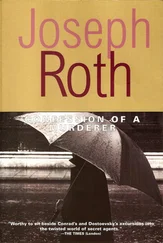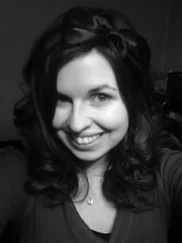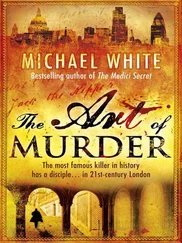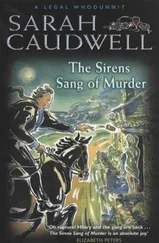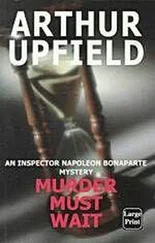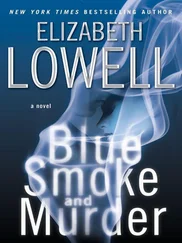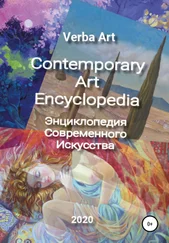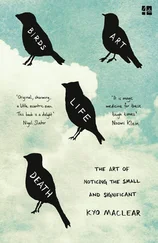Jose Somoza - Art of Murder
Здесь есть возможность читать онлайн «Jose Somoza - Art of Murder» весь текст электронной книги совершенно бесплатно (целиком полную версию без сокращений). В некоторых случаях можно слушать аудио, скачать через торрент в формате fb2 и присутствует краткое содержание. Жанр: Триллер, на английском языке. Описание произведения, (предисловие) а так же отзывы посетителей доступны на портале библиотеки ЛибКат.
- Название:Art of Murder
- Автор:
- Жанр:
- Год:неизвестен
- ISBN:нет данных
- Рейтинг книги:4 / 5. Голосов: 1
-
Избранное:Добавить в избранное
- Отзывы:
-
Ваша оценка:
- 80
- 1
- 2
- 3
- 4
- 5
Art of Murder: краткое содержание, описание и аннотация
Предлагаем к чтению аннотацию, описание, краткое содержание или предисловие (зависит от того, что написал сам автор книги «Art of Murder»). Если вы не нашли необходимую информацию о книге — напишите в комментариях, мы постараемся отыскать её.
Art of Murder — читать онлайн бесплатно полную книгу (весь текст) целиком
Ниже представлен текст книги, разбитый по страницам. Система сохранения места последней прочитанной страницы, позволяет с удобством читать онлайн бесплатно книгу «Art of Murder», без необходимости каждый раз заново искать на чём Вы остановились. Поставьте закладку, и сможете в любой момент перейти на страницу, на которой закончили чтение.
Интервал:
Закладка:
'Bruno? Never. He left me behind as well, along with all his other memories. I know we're neighbours now, but I've never felt like going to ask to borrow a cup of milk.' Miss Wood copied his weary smile. 'Some time ago I got a few phone calls from Jacob Stein. And also from that… that secretary of his, the odd one…' 'Murnika de Verne.'
'Exactly. They would ask me if I needed anything, as if they wanted to show me that he never really forgot his friends. But I never spoke to Bruno again, and I never wanted to. How a friendship ends is as mysterious as how it begins,' Victor Zericky said: 'it simply happens.'
Miss Wood nodded. Hirum Oslo's tranquil shadow had suddenly flitted through her mind. Yes, the end is as mysterious as the beginning. And as mysterious, too, as the part in the middle. It simply happens. 'Am I boring you?' Zericky asked affably. 'No, on the contrary.'
As he was talking, Zericky was absentmindedly pulling some sheets of paper out of another folder. Miss Wood asked: 'What are those drawings?'
'They're old watercolours, pastels, carbon sketches and ink drawings his father did. I thought you might like to see them. Maurits thought he was a painter, did you know that? One of his great frustrations was that Bruno could not draw,' he said, with a brief laugh.
'From what I can see, the father could, though,' said Miss Wood as she looked at the drawings one by one. She recognised some landscapes of the village with the castle in the background.
'He wasn't bad at all, was he?' Zericky agreed. 'One day I must sort out the collection properly. Perhaps I'll write a biography of the Van Tysch family and use them to illustrate… What's the matter?'
Zericky had seen the sudden change in April Wood's expression.
20.05.
Bosch decided to get into the Tunnel through one of the emergency exits, at the far end. He walked down the whole length of the first side. The rain had eased to a fine drizzle. Even so, he seemed to have got drenched. Why on earth had he not picked up a blasted umbrella? When he reached the area close to the Stedelijk gardens he waved his magic card once more, and passed through the barriers. In front of him was the impressive black curtain. The way in was a labyrinth of folds to help prevent any light penetrating inside. Two guards were on duty. Although they recognised him at once, he still had to go through the rigorous checks he himself had set up. He placed his left hand on the plasma screen that analysed his fingerprints, and spoke into the microphone. He was so nervous he had to repeat the voice test twice. They finally let him through. Bosch was pleased that the security measures were working so well.
When he got inside the Tunnel his eyes closed without any need for lids.
20.20.
'What's this?' asked Miss Wood.
Zericky looked at the drawing she was holding up, and smiled.
'Oh, that was how Maurits crossed out the drawings he didn't like. He never tore them up. He scribbled on them with a red pen, and always in the same way. He was a violent man, but he liked his routines.'
It was a China ink drawing of a human figure, probably a villager from Edenburg. It was scrubbed out with big red crosses. Zericky saw something had attracted the woman's attention, because he saw her place her forefinger on the paper and mutter something. It was as though she were counting the crosses.
'He always crossed them out like that?' she said, in a very odd voice. Zericky wondered what had so intrigued her, but the years and loneliness had made him discreet. 'Yes, as I said.'
Miss Wood counted them again. Four crosses and two vertical lines. Eight lines in crosses and two parallel lines. Ten lines altogether. My God. She counted them again: she didn't want to make a mistake. Four crosses and two separate lines. Eight plus two. Ten in total. She picked up the remaining drawings and flicked through them. She stopped when she came to another crossed out one. It was the rough sketch of a face, traced in pencil. The crosses and vertical lines again. Four plus two. Eight and two. Ten altogether.
She turned to the historian, trying to stay calm as she spoke. 'Mr Zericky. Do you have any more drawings?' 'Yes. In the cellar.' 'Could I see them all?'
'All of them? There must be hundreds of them. Nobody has seen them all.'
'It doesn't matter. I've got time.' ‘I’ll get the folders.'
20.15.
When he found himself inside the Tunnel, Bosch realised immediately it was very different from seeing it on the monitors. It smelt of paint and there was a strange warmth about it: all his senses told him he was in a different universe. The feeling was similar to contemplating a lake at night and then plunging headfirst into its dark waves. The silence was awe-inspiring, and yet there were sounds: the echoes of footsteps and coughs, whispered comments. There were also the grave harmonies of a majestic music that came from the great dome of the Tunnel. Bosch recognised it: The Funeral Music for Queen Mary, by Purcell, with its drumbeats from beyond the grave.
In among these baroque shadows, Bosch could make out the first painting. The tumultuous crowd forming The Night Watch took up a large part of the bend in the horsehoe, and gleamed in the chiaroscuro lighting. Twenty painted, motionless human beings. What meaning could there possibly be to that absurd army? Like all Dutchmen, Bosch knew the original on show in the Rijksmuseum: it was a typical portrait of a military company, in this case commanded by Captain Frans Banning Cocq, but Rembrandt's stroke of genius had been to paint them at work, as though he had photographed them as they were patrolling the street. Van Tysch on the other hand had petrified them. And the figures were full of grotesque details. The Captain, for example, was a woman, and the red sash of his uniform was painted on her stomach. His lieutenant was a yellow monster in ruffs and a wide-brimmed hat. The golden girl with a hen dangling from her waist was completely naked here. The soldiers still bore lances and muskets, but their faces were covered in blood. Torn to shreds, their banner lashed the darkness of the canvas. The background was filled with huge structures like a Piranesi invention. A woman dressed in leather was weeping. A shadowy shape on four legs wearing a hangman's cap was crawling at the lieutenant's feet.
By comparison, the modest, solitary figure of Titus on show a few metres away on a small plinth seemed to lack interest: it was a young boy – Rembrandt's son in the original – dressed in furs and wearing a cap. But the play of lights and paint lent him a constantly changing look. The optical effect was similar to the shifting gleams of a diamond's facets. Bosch screwed up his eyes and thought he could see by turns the head of an unknown animal, the luminous face of an angel, a porcelain doll, and a caricature of Van Tysch's features.
The guy is completely crazy,' he heard a visitor say in a clear Dutch voice as like him he filed past in the darkness, 'but he fascinates me.'
Bosch could not make up his mind whether he agreed with this anonymous declaration. He went on, without stopping in front of The Feast of Belshazzar, with its banquet of human beings. What most interested him was further on, floating in a lake of glittering browns.
When he reached her, Bosch tried to swallow, but discovered his mouth was completely dry.
Danielle was standing still, quietly beautiful in the midst of all the ochre tones. The Young Girl Leaning on a Windoiusill was a truly magnificent work, and Bosch could not help but feel proud. She was leaning against a chestnut-brown sill, staring into space with eyes that looked like jewels set in a face the colour of alabaster. The white paint was so dense it seemed almost obscene to Bosch. He could not understand why Van Tysch had wanted to shroud Danielle's pretty features in this snow. But what most amazed him was to realise it was her. He would not have been able to tell how he knew, but he would have recognised her from a thousand similar figures. Nielle was there, inside that bloodless mask, and there was something in the position of her hands or the tilt of her shoulders that gave the game away. Bosch lost himself in contemplation of her for several moments. Then he continued on his way.
Читать дальшеИнтервал:
Закладка:
Похожие книги на «Art of Murder»
Представляем Вашему вниманию похожие книги на «Art of Murder» списком для выбора. Мы отобрали схожую по названию и смыслу литературу в надежде предоставить читателям больше вариантов отыскать новые, интересные, ещё непрочитанные произведения.
Обсуждение, отзывы о книге «Art of Murder» и просто собственные мнения читателей. Оставьте ваши комментарии, напишите, что Вы думаете о произведении, его смысле или главных героях. Укажите что конкретно понравилось, а что нет, и почему Вы так считаете.

